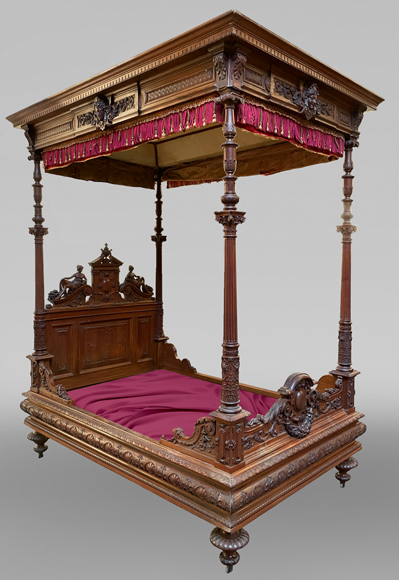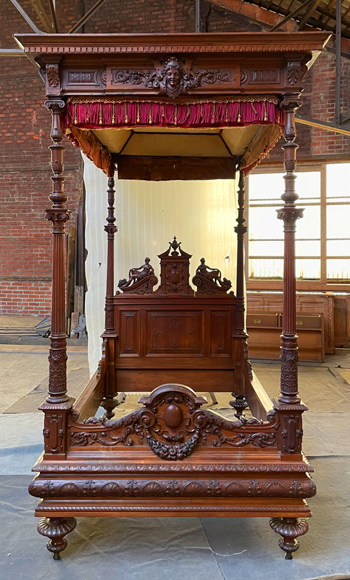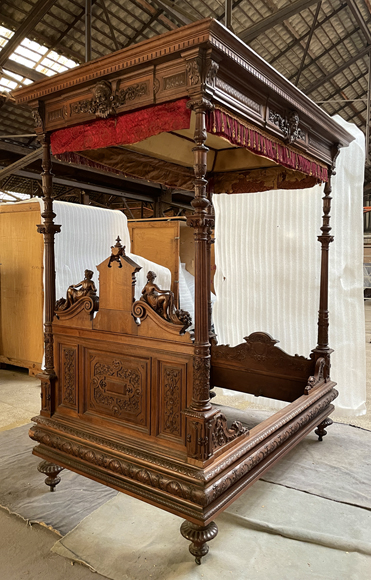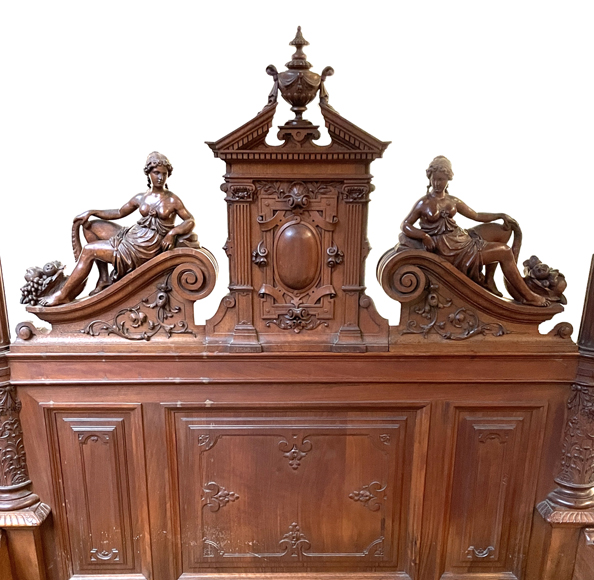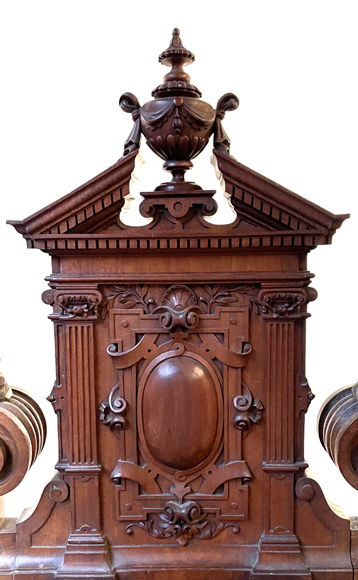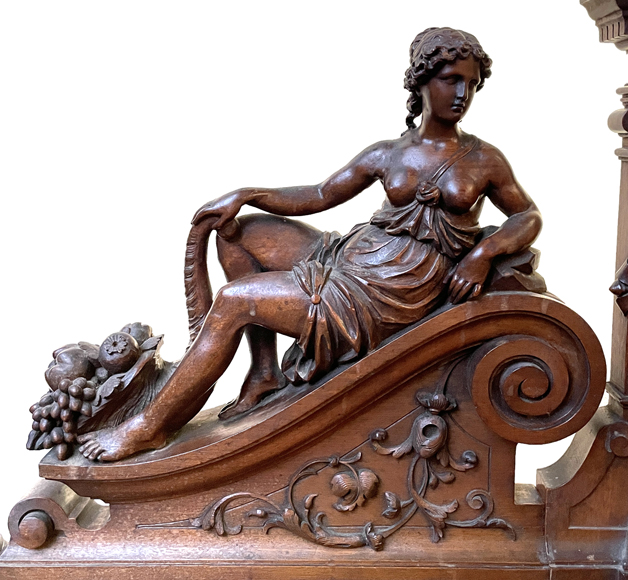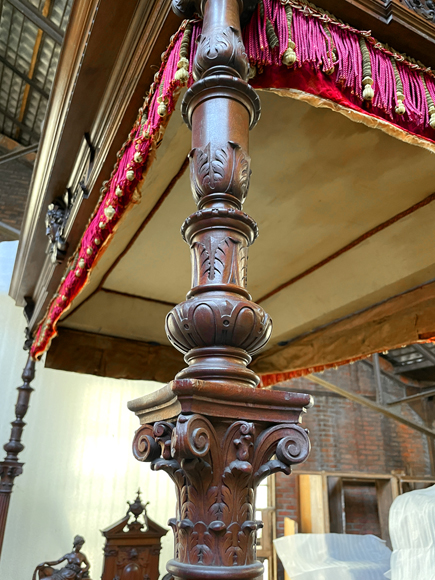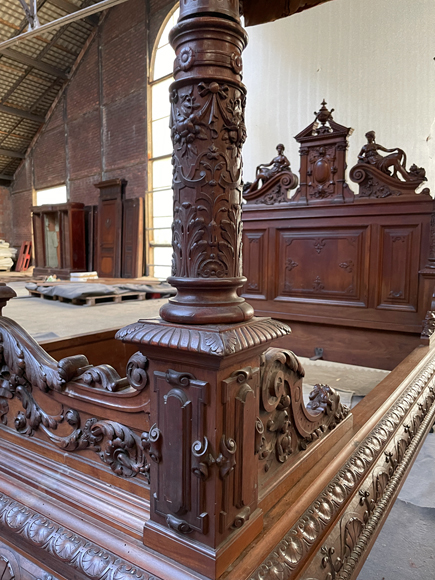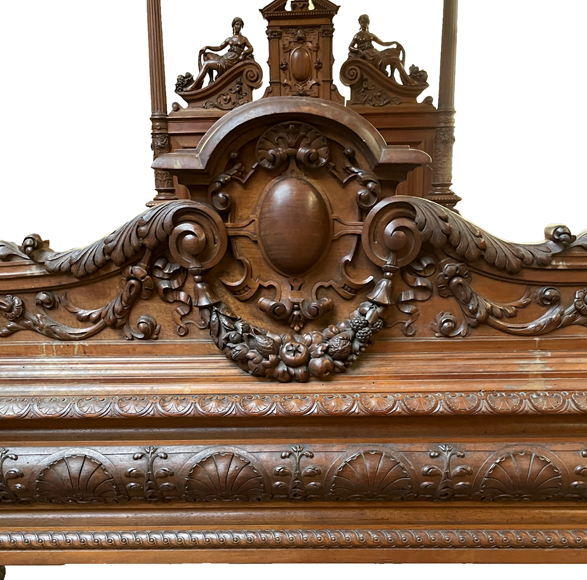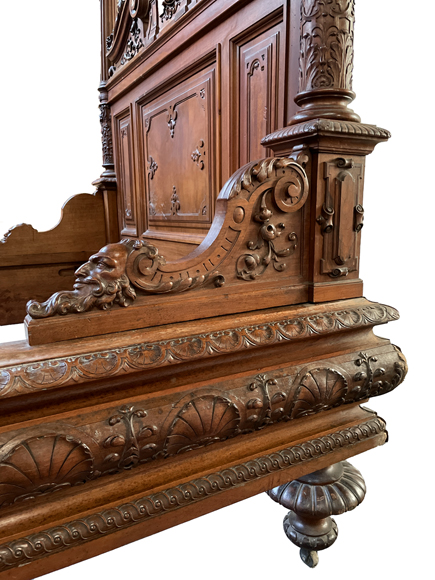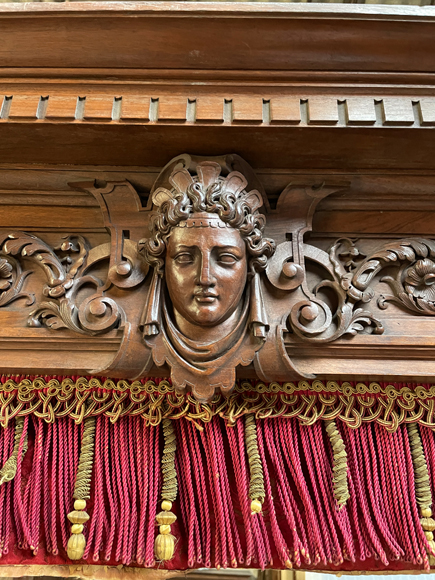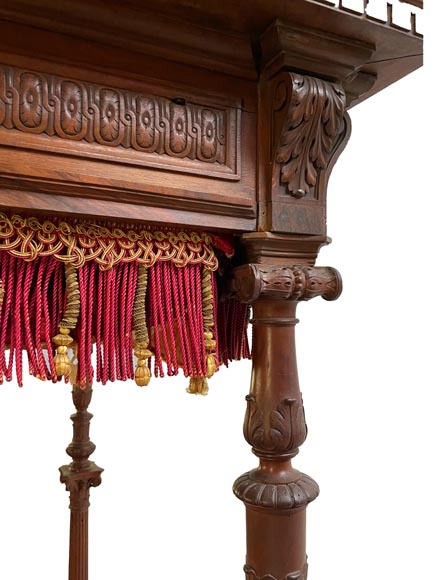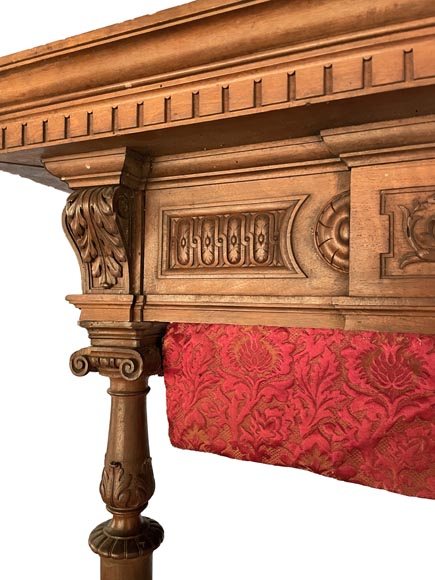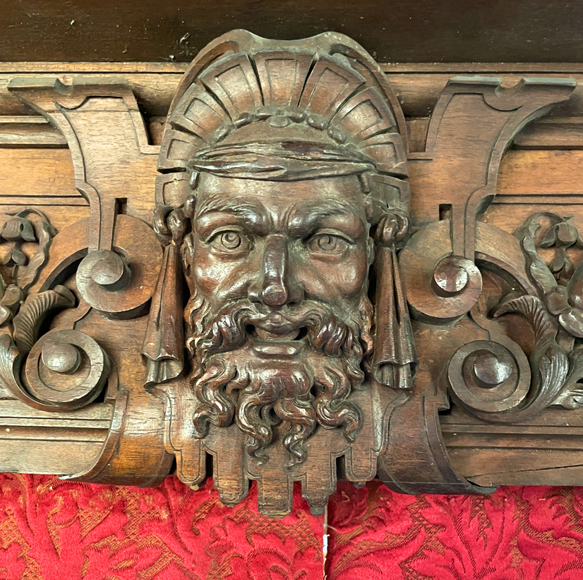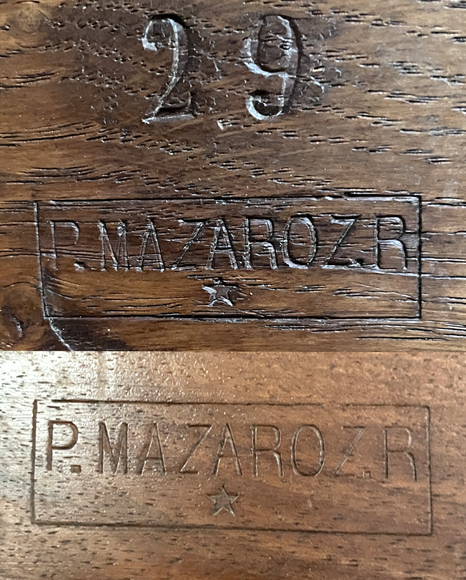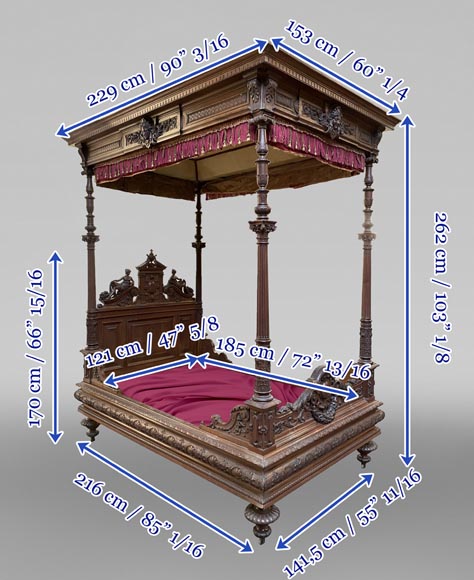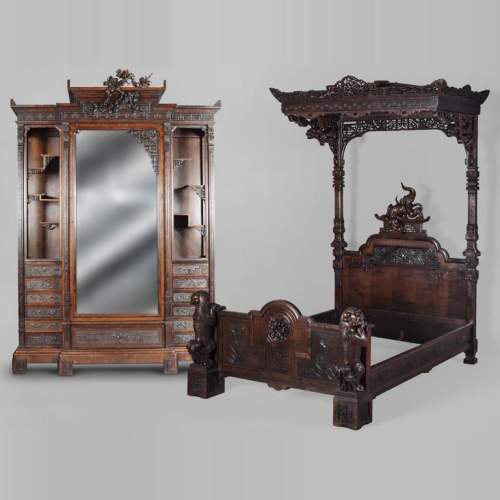Style Neo-Renaissance / Ref.15584
Jean-Paul MAZAROS (1823-1900), Neo-Renaissance four-poster bed in carved walnut
Dimensions
Width 60'' ¼ 153cm
Height 103'' ⅛ 262cm
Depth: 90'' ⅛ 229cm
A friend and patron of Gustave Courbet, and close to Pierre-Joseph Proudhon with whom he shared ideas, Jean-Paul Mazaroz was a singular figure: collector, sculptor, and author of sociological and economic essays. He entered the École des Beaux-Arts in Dijon in 1846 and then the École des Beaux-Arts in Paris. In 1850, he partnered with the cabinetmaker Pierre Riballier, whose daughter he married in 1853. Following the Universal Exhibition of 1851, he discovered the use of machinery in cabinetmaking, a tool previously used exclusively by the English. A pioneer in its use in France, he thus ushered the Riballier-Mazaroz workshop into a new era. Eager to make use of all the advancements of his time, Jean-Paul Mazaroz readily described himself as an "industrial artist" and published a photographic collection of his workshop's creations, rather than a simple catalog of engravings. A supplier to Emperor Napoleon III, his company was one of the most prosperous industries of the Second Empire and the Third Republic before closing in 1890.
The Neo-Renaissance ornamental style of this imposing four-poster bed makes it a superb example of the historicist style of the Napoleon III period. Adorned with cartouches featuring mascarons and acanthus scrolls, the canopy simulates an antique entablature, decorated with gadroons and finished with a border of purple fringe. It is supported by four composite columns of particularly intricate design: from bottom to top, they feature a register of acanthus leaves intertwined with garlands of fruit, a fluted shaft surmounted by a Corinthian capital. The whole is topped by a fanciful structure crowned with an Ionic capital. The headboard displays a Renaissance-style architectural motif resembling a tabernacle framed by two reclining female figures beside cornucopias. The structure rests on turned feet decorated with gadroons. The decorative motifs on the bed's side posts are particularly rich (twists, palmettes, acanthus), and the sculpted volutes and faun masks attest to virtuoso cabinetmaking inspired by the 16th century. Finally, the foot of the bed features a superb garland of fruit, surmounted by a medallion and a low-arched entablature. The whole is flanked by sumptuous acanthus leaf volutes. The design of our bed is similar to the one exhibited by Mazaroz at the 1867 Universal Exhibition (1) and purchased by the Russian industrialist and collector Paul Demidoff, owner of the famous Demidoff vase now in the Metropolitan Museum of Art in New York (inv. 44.152a). Our bed bears the maker's mark in several places: "P. MAZAROZ. R." It is conceivable that Jean-Paul Mazaroz's interest in the Neo-Renaissance style stemmed both from the historicist vogue of the second half of the 19th century and from the rediscovery at that time of Hugues Sambin, a 16th-century sculptor and one of the few furniture makers whose work is documented for this period. Also of Burgundian origin, it is reasonable to assume that Mazaroz was particularly drawn to his style.
The wonders of the Universal Exhibition of 1867, volume 1, Paris, Jules Mesnard, p. 199.
Informations
Price: on request
Recommended for you :
Dimensions:
Width: 155
Height: 255
Depth: 225
Dimensions:
Width: 218
Height: 247
Depth: 210
Dimensions:
Width: 258
Height: 201
Dimensions:
Width: 168
Height: 235
Depth: 55
Dimensions:
Width: 198
Height: 187
Depth: 207
Dimensions:
Width: 238
Height: 86
Depth: 95
Dimensions:
Width: 234
Height: 276
Depth: 218
Dimensions:
Width: 132
Height: 160
Depth: 221
Dimensions:
Width: 157
Height: 267
Depth: 208
Dimensions:
Width: 159
Height: 258
Depth: 211
Dimensions:
Width: 221
Height: 289
Depth: 185
Dimensions:
Width: 159
Height: 255
Depth: 55



